The
German Boxer or
Boxer breed is one of the most sought after worldwide, they are balanced, affectionate and very sociable. Because they are active and faithful dogs, Boxers are ideal for taking care of the family, even children, they are always alert to any situation and will take special care of them and the house without any problem. These dogs create a very special bond with families, they adapt easily to the home environment and are accommodating, protective and very affectionate.
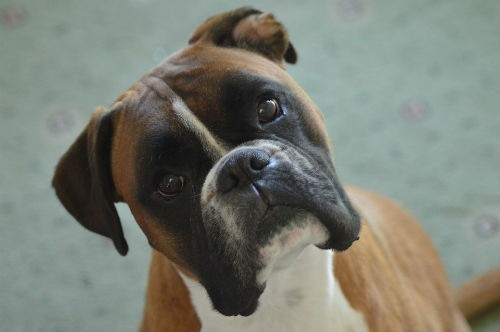
You must keep in mind that they are a breed that has a lot of physical strength, therefore they must be constantly supervised when they play with children. As they are excellent companion dogs, it is important to take them for walks, play with them and keep them in frequent physical activity, this way you will keep your pet very happy.
-
Medium size .
-
Weight : Between 25 and 32kg.
-
Hair type : Very short and straight.
-
Character : Cheerful, Playful, Energetic, Devoted, Fearless, Friendly, Intelligent, Loyal, Confident, Calm, Brave
-
Health : You may have some health problems.
-
Life expectancy : Between 10 and 12 years.
Origin of the Boxer
This breed is of
German origin , born in
Munich in the year
1895 , in a farm called
“Von Dom” . Its creators were
Friedrich Robert , Elard König and R. Höpner , founders of the first
“Deutscher Boxer Club” . It is born from the cross between a Brabant Bullenbeisser (extinct dog of German origin and breed developed by hunters. Its name means bear biter or bull biter) and a Bulldog (
English Bulldog , called bull biter, for the dogs used in fights with bulls around the 17th century, being banned in the year 1835, in the United Kingdom).
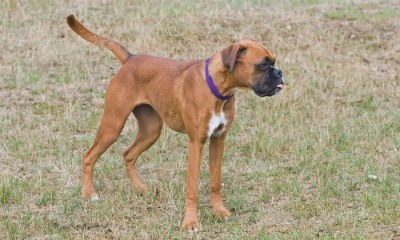
This breed was used as a messenger war dog and as an ambulance dog during World War II, carrying communication cables and helping to mobilize wounded soldiers. According to the UKC (United Kennel Club), the term “Boxer” is due to the strikingness of its chest and its way of walking; The predisposition of its front legs resembles the position of boxers. It is also said that the term derives from “Boxl”, a word used by the Germans to designate the Bullenbeisser.
Boxer Puppy Care
When having a
boxer puppy at home, preferably from 8 weeks old, consider the attention you are going to give him. They are very playful and active. Don't leave him alone for too long and treat him gently and tenderly. Since he is a puppy, he can be easily scared. Despite its robust image, it is fragile, be very careful not to be carried often or disturbed while it adapts to its new environment. You should not yell at him, you must speak to him with a calm tone of voice and you cannot hit him when he does something mischievous, that would cause trauma to the puppy and he would develop a fearful or aggressive attitude.
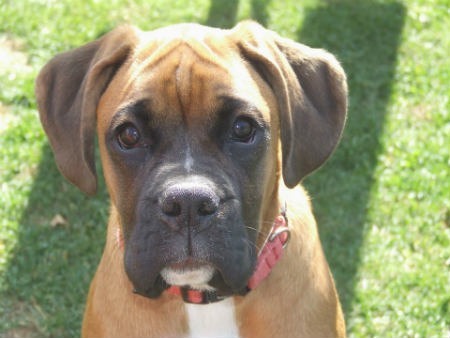
Let him know every corner of your home, he will gain confidence and security. Show him his bed and toys, so he knows that he is also part of the family. Locate the place where he will have his food and water, as well as the place where he will relieve himself. Both
puppies and adults, the health of Boxers cannot be neglected; vaccinations are important to prevent diseases. Comply with your control of visits to the veterinarian. The ideal time to start vaccination control is from two or three months of age. The food must be special for their breed and according to their age. The same thing happens with the personal care items you use such as shampoo, brush or rubber glove for styling. Create a routine for your boxer, such as walk time, play time, feeding time, bedtime, and bath day.
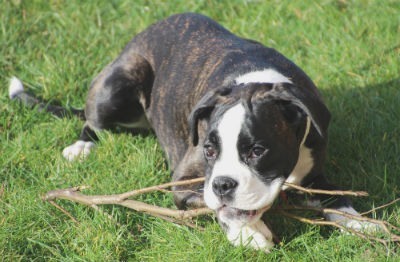
Puppies cannot be bathed before they are three months old, nor when they have been vaccinated. To do so, you must wait a week after their vaccination. You can clean your pet with wet wipes if necessary. It is recommended to bathe them at least every 25 or 30 days, so you do not eliminate the natural oil from their skin, which protects them from allergies and sensitivity. Physical and mental stimulation is necessary for the healthy development of your pet. Take him out for a walk at least three times a day, let him run and play. Physical activity will help you develop your muscles and maintain a weight according to your height. Maintaining contact with nature and other environments will help you develop your senses significantly.
Feeding a Boxer
Keep in mind the age of your boxer to comply with his
feeding schedule . Before the fourth week of birth he is still dependent on his mother and it is not advisable to give him solid food. As it grows, it will be necessary to incorporate dry feed high in protein. The amount of food you should give him will increase as he grows. In the same way, it reduces the frequency with which it must be fed. His diet must be careful and balanced. It is best to consult with your veterinarian about the feeding scheme that you should provide. Avoid giving him leftovers from your food, as well as foods rich in starch or chocolate. The ideal is to provide
high quality feed like the one we offer at Lobo Azul .

Check that your Boxer likes the food and monitor whether he tolerates it by observing the appearance of his feces. Don't forget that depending on its diet, it will be a healthy and happy pet.
Breed Characteristics
- The life expectancy of the Boxer is 10 to 12 years , this depends on whether it is a healthy dog and the care you offer it during its life. It can have a short average lifespan if you don't give it proper attention. It is advisable to take him to the vet regularly for check-ups.
- It is one of the Brachycephalic dog breeds, that is, its skull is wide and short, and it has a flat snout compared to other dogs.
- It has a heavy and strong head, proportionate to its body and with a high-pressure jaw.
- On his face he has a kind of black mask.
- His eyes are dark or almond in color.
- With ears folded towards the cheeks.
- It is a dog with a strong neck and broad chest, which shows character and presence with its lively movement.
- Muscular, athletic, with a short back and strong legs.
- Its size can be medium to large. The average height of the male is 57 to 63 cm, and the female is 53 to 59 cm.
-
As for the weight of the male, it is between 27 and 32 kg, and the female between 25 and 29 kg .
- Their coat is short, a little hard and shiny, brindle in color but it varies in some types of Boxer, such as white, black and brown.

We can find 5 Types of Boxer:
-
Brindle : It is one of the most common, its fur is dark brown with black stripes on the back and white on the chest, belly, legs and ankles. Some are so dark that they appear black.
-
White : Only 25% of the specimens of this breed are born white. They are not albinos but they are sensitive to the sun. You should apply sunscreen if you are going to expose them to UV rays, as they are prone to cancer.
-
Black : The color that generates controversy, because genetically it is unlikely that you will be born this color. There are only two reasons for your boxer briefs to be black. The first is that it is not a pure breed, due to inheriting certain genes from its ancestors between the crossing of two mixed breeds but also boxers (which are not pure). The second is that it is brindle but inverted, that is, very dark brindle.
-
Fawn : It is a single brown to almost reddish color, and also with white spots on the chest, belly and legs.
-
Albino : How do you know if you are albino or white? Take into consideration the color of his eyes, they are light in color and his eyelids are pink because they do not produce melanin), unlike white, who has dark-colored eyes.
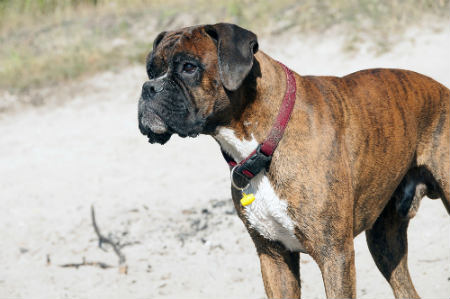
If it has any spots on its body or snout, it is not albino. Both white and albino boxers can develop skin and eye cancer, which is why protection is recommended, especially in summer. This type of boxer is difficult to find. Regarding their temperament,
boxers are dogs that stand out for their intelligence, energy and for being very playful . It is common to believe that they are aggressive dogs, but nothing could be further from the truth. They are usually family animals and protectors of their environment. If any specimen is aggressive it is because it has not been raised correctly.
Boxer Health
If you have offered your dog a balanced diet, kept him physically active and given him all the love he deserves, you cannot rule out or neglect the possible diseases he may suffer in the future.

The most common diseases in Boxers normally occur at the beginning of their old age, so you must be very attentive to any unusual behavior. By knowing their health status, you can avoid or treat in time some of the diseases that affect this breed of dog, such as:
- Heart problems
- Tumors
- Epilepsy
- Hip dysplasia , hereditary bone disease.
- Stomach torsion , abdominal pain and inflammation
- Spondylosis, degenerative condition of the spine
- Canine osteoarthritis , which causes a lot of pain and occurs mainly in areas such as the hip and back
- Dermatitis
If you are aware of the health problems of your puppy's parents, you will know what illness they may be prone to. In addition to this, it is important that you know that
this breed has a low tolerance for heat , for this reason you should not force your dog to overexercise, as it could cause heat stroke and put your pet's life at risk. The attention and care you give to your pets is important, their quality and life expectancy will depend on this.
How to train your pet
According to the list of the most intelligent dogs by Psychologist and Professor Stanley Coren, the Boxer breed is in position number 48, for having average working intelligence and obedience. They respond 30% of the time. Between 40 and 80 repetitions are needed to understand an order.
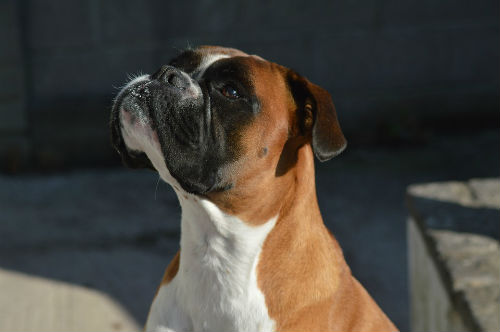
Canine intelligence has three aspects according to Coren:
-
Instinctive intelligence : It has skills such as herding, guarding or companionship.
-
Adaptive intelligence : Ability to solve a problem.
-
Work and obedience intelligence : It is the human being's ability to learn.
Thanks to the bond created between the guardian and the pet, the dog's abilities and skills develop. Training and education are fundamental keys to a better relationship with the environment, so it should begin when they are still puppies. Once you have learned the basic obedience commands, you proceed with canine commands such as tricks, shaking your paw or barking when you ask, sitting or lying down, to name a few. Among other teachings, there is the use of newspaper so that he can relieve himself on paper and take him out at certain times so that he can do them outside the house. The use of the collar and leash can be tested hours before going out so that you adapt little by little and do not want to take them off when you go out for a walk.
Some Curiosities of the Boxer
- The International Cynological Federation (FCI) , the international federation in charge of promoting and governing cynology or canophilia, as well as dog breeding standards, does not accept White and Albino Boxers as specimens of this breed .
- In Spain the Boxer is not considered a dangerous breed, although it is still thought to be dangerous in other parts of the world.
- During World War II , the race was ignored, being accepted in the next few years in the United States.
Do not hesitate to have your Boxer breed pet, it will be the ideal companion. Cheerful, faithful and excellent companion for your life.
Check the origin, character and other curiosities of other dog breeds here:
 You must keep in mind that they are a breed that has a lot of physical strength, therefore they must be constantly supervised when they play with children. As they are excellent companion dogs, it is important to take them for walks, play with them and keep them in frequent physical activity, this way you will keep your pet very happy.
You must keep in mind that they are a breed that has a lot of physical strength, therefore they must be constantly supervised when they play with children. As they are excellent companion dogs, it is important to take them for walks, play with them and keep them in frequent physical activity, this way you will keep your pet very happy.

 Let him know every corner of your home, he will gain confidence and security. Show him his bed and toys, so he knows that he is also part of the family. Locate the place where he will have his food and water, as well as the place where he will relieve himself. Both puppies and adults, the health of Boxers cannot be neglected; vaccinations are important to prevent diseases. Comply with your control of visits to the veterinarian. The ideal time to start vaccination control is from two or three months of age. The food must be special for their breed and according to their age. The same thing happens with the personal care items you use such as shampoo, brush or rubber glove for styling. Create a routine for your boxer, such as walk time, play time, feeding time, bedtime, and bath day.
Let him know every corner of your home, he will gain confidence and security. Show him his bed and toys, so he knows that he is also part of the family. Locate the place where he will have his food and water, as well as the place where he will relieve himself. Both puppies and adults, the health of Boxers cannot be neglected; vaccinations are important to prevent diseases. Comply with your control of visits to the veterinarian. The ideal time to start vaccination control is from two or three months of age. The food must be special for their breed and according to their age. The same thing happens with the personal care items you use such as shampoo, brush or rubber glove for styling. Create a routine for your boxer, such as walk time, play time, feeding time, bedtime, and bath day.  Puppies cannot be bathed before they are three months old, nor when they have been vaccinated. To do so, you must wait a week after their vaccination. You can clean your pet with wet wipes if necessary. It is recommended to bathe them at least every 25 or 30 days, so you do not eliminate the natural oil from their skin, which protects them from allergies and sensitivity. Physical and mental stimulation is necessary for the healthy development of your pet. Take him out for a walk at least three times a day, let him run and play. Physical activity will help you develop your muscles and maintain a weight according to your height. Maintaining contact with nature and other environments will help you develop your senses significantly.
Puppies cannot be bathed before they are three months old, nor when they have been vaccinated. To do so, you must wait a week after their vaccination. You can clean your pet with wet wipes if necessary. It is recommended to bathe them at least every 25 or 30 days, so you do not eliminate the natural oil from their skin, which protects them from allergies and sensitivity. Physical and mental stimulation is necessary for the healthy development of your pet. Take him out for a walk at least three times a day, let him run and play. Physical activity will help you develop your muscles and maintain a weight according to your height. Maintaining contact with nature and other environments will help you develop your senses significantly.
 Check that your Boxer likes the food and monitor whether he tolerates it by observing the appearance of his feces. Don't forget that depending on its diet, it will be a healthy and happy pet.
Check that your Boxer likes the food and monitor whether he tolerates it by observing the appearance of his feces. Don't forget that depending on its diet, it will be a healthy and happy pet.

 If it has any spots on its body or snout, it is not albino. Both white and albino boxers can develop skin and eye cancer, which is why protection is recommended, especially in summer. This type of boxer is difficult to find. Regarding their temperament, boxers are dogs that stand out for their intelligence, energy and for being very playful . It is common to believe that they are aggressive dogs, but nothing could be further from the truth. They are usually family animals and protectors of their environment. If any specimen is aggressive it is because it has not been raised correctly.
If it has any spots on its body or snout, it is not albino. Both white and albino boxers can develop skin and eye cancer, which is why protection is recommended, especially in summer. This type of boxer is difficult to find. Regarding their temperament, boxers are dogs that stand out for their intelligence, energy and for being very playful . It is common to believe that they are aggressive dogs, but nothing could be further from the truth. They are usually family animals and protectors of their environment. If any specimen is aggressive it is because it has not been raised correctly.
 The most common diseases in Boxers normally occur at the beginning of their old age, so you must be very attentive to any unusual behavior. By knowing their health status, you can avoid or treat in time some of the diseases that affect this breed of dog, such as:
The most common diseases in Boxers normally occur at the beginning of their old age, so you must be very attentive to any unusual behavior. By knowing their health status, you can avoid or treat in time some of the diseases that affect this breed of dog, such as:
 Canine intelligence has three aspects according to Coren:
Canine intelligence has three aspects according to Coren:












